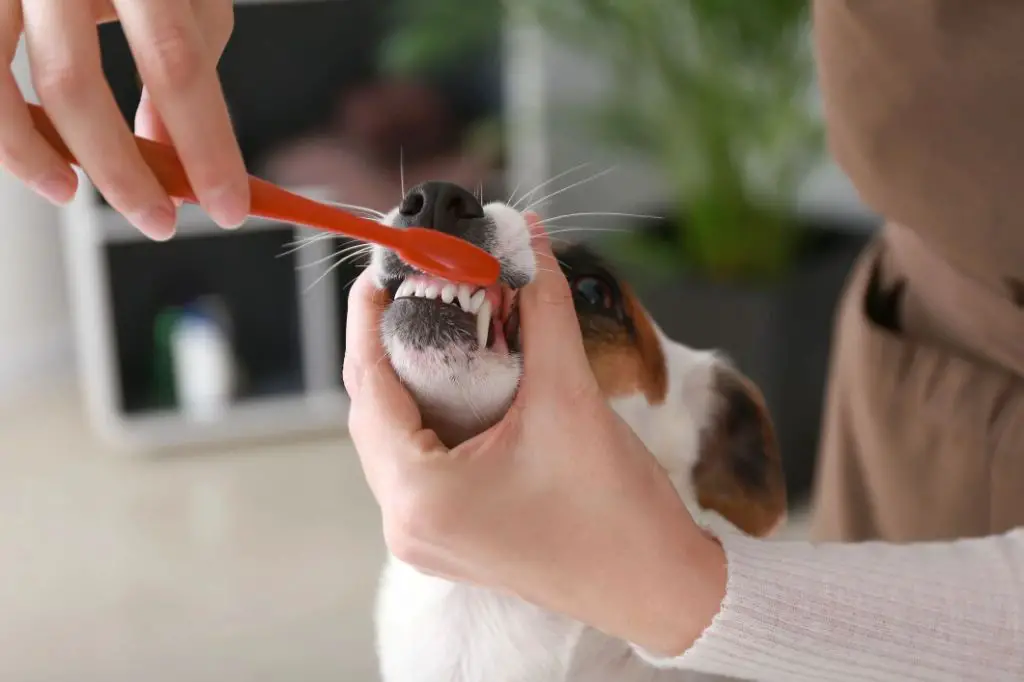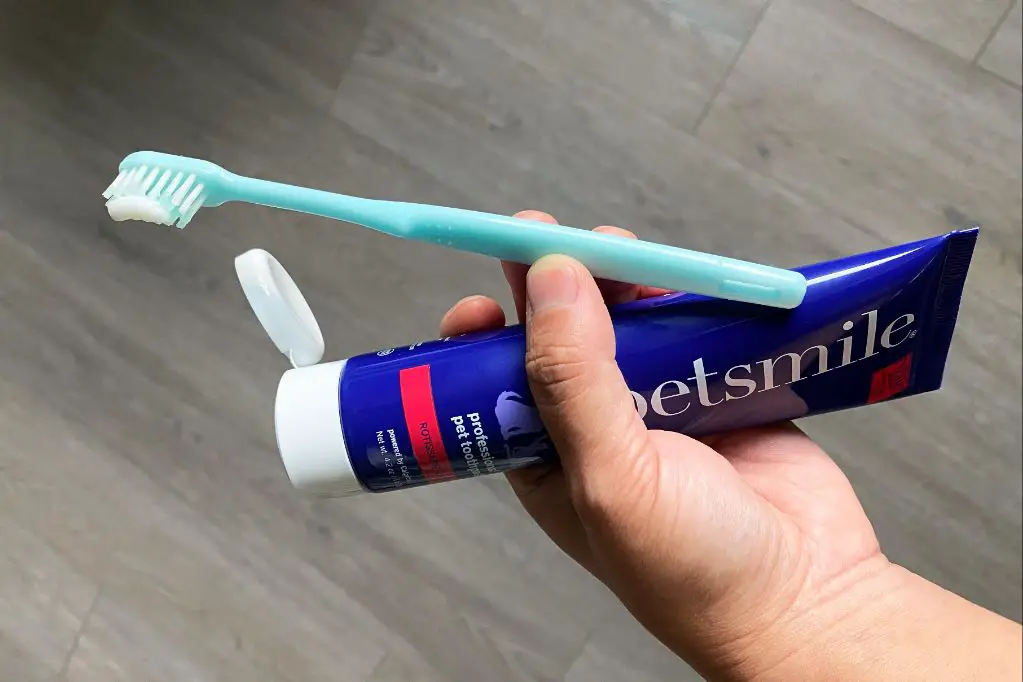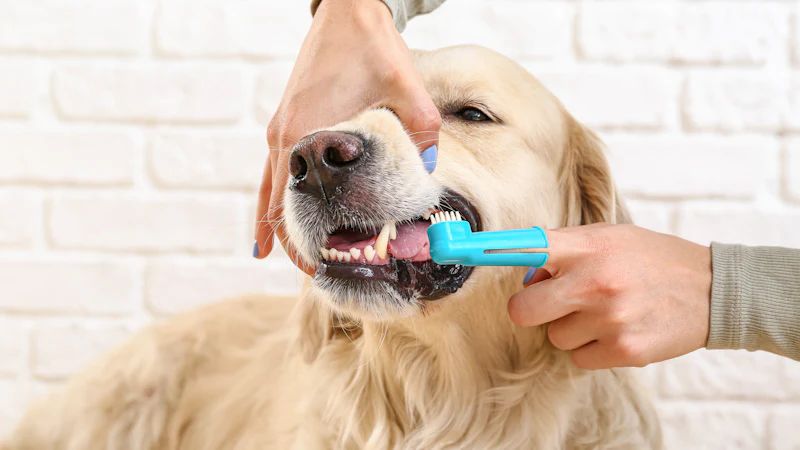The Importance of Dental Care for Our Aging Canine Companions
As dogs enter their golden years, their dental health becomes more critical than ever. With advancements in nutrition and veterinary medicine, dogs are living longer lives. This means more dogs are reaching senior age, defined as 7 years and older for larger breeds and 10 years and older for smaller breeds.
However, with age comes an increased risk for dental disease. In fact, by the time dogs reach age 3, 80% already have some signs of oral disease. As plaque and tartar accumulate, bacteria in the mouth can enter the bloodstream and damage internal organs. Poor dental health is tied to systemic issues such as kidney, liver and heart disease in senior dogs.
The good news is that brushing your senior dog’s teeth daily can help prevent dental disease. Proper at-home dental care, combined with professional cleanings at the vet, is key for our aging pups. While it may seem daunting to introduce a new routine, it’s never too late to start caring for your senior dog’s teeth.
Benefits of Brushing Dogs’ Teeth
Consistently brushing your senior dog’s teeth provides many important health benefits. By regularly removing plaque and tartar buildup, tooth brushing helps prevent periodontal disease. Plaque contains bacteria that can infect the gums and damage tissue. Tartar also irritates the gums and provides an environment for further bacterial growth. With age, dogs are at even greater risk for these oral health issues.
Brushing helps disrupt plaque and tartar formation and reduce the risk of painful infections and tooth loss. It also limits the bacteria in the mouth that could spread to other parts of the body. Overall, maintaining good dental hygiene for senior dogs through brushing can significantly improve their lifespan and quality of life.
Challenges of Senior Dog Dental Care
Brushing a senior dog’s teeth can be more challenging than brushing a younger dog’s teeth. Senior dogs often develop health issues that can make regular teeth brushing difficult.
Arthritis is common in older dogs, and stiffness in their legs and joints can make it hard for them to hold their head still for brushing. Their decreased mobility may make it a struggle to get them into a position where you can properly see and access their teeth.

Many senior dogs also have sensitive teeth due to receding gums or dental disease. The brushing motion may cause discomfort, making some dogs resistant to having their teeth brushed.
Additionally, owners often overlook dental care as their dog ages. Focusing on other senior health issues may take precedence, and an owner may not realize the importance of maintaining dental hygiene even in old age.
With patience, creativity and perhaps some adjustments like using a finger brush or putting a towel under your dog’s chest for support, it is possible to overcome these challenges and keep your senior dog’s teeth clean. Their dental health is just as important now as when they were puppies.
When to Start Brushing
Ideally, it’s best to start brushing your dog’s teeth when they are still a puppy. Getting them used to the routine early helps promote lifelong dental health by preventing plaque and tartar buildup from an early age. The American Veterinary Dental College recommends starting dental care as soon as you get a new puppy or kitten.
However, it’s never too late to start taking care of your senior dog’s teeth. Even if the teeth already have plaque and tartar, beginning a brushing routine can still help improve your dog’s oral health. The cleansing effects of brushing can slow down future plaque accumulation and minimize the risk of complications. Any efforts to clean your elderly dog’s teeth will benefit their health and wellbeing.
How to Get Started
The key to successfully brushing your senior dog’s teeth is to introduce it slowly and make the experience positive through rewards and praise. Don’t expect your dog to fully cooperate with a toothbrush right away.
Start by gently rubbing their gums and teeth with your finger or a soft cloth to get them used to having their mouth handled. Offer treats and affection as you do this so they associate it with something good. You can also use pet tooth wipes to start getting them accustomed to the texture and scent.
Once your dog seems comfortable with you touching their mouth, slowly introduce a toothbrush designed for pets. Let them lick toothpaste off the brush at first, praising them the whole time. Gradually work up to gently brushing a few teeth at a time, going very slowly and keeping sessions brief in the beginning before building up.
The key is patience, persistence and positivity. If your senior dog resists or gets stressed, don’t force it. Try again later in a calm manner. With time and consistency, regular tooth brushing can become a pleasant routine.
Toothpaste Considerations
When selecting toothpaste for your senior dog, it’s crucial to use a toothpaste made specifically for canines, not humans. Human toothpaste contains ingredients that can upset a dog’s stomach. Look for a pet-safe enzyme toothpaste formulated to reduce plaque and tartar.
Since senior dogs often suffer from arthritis, choose a toothpaste that doesn’t require vigorous brushing. Gel-based pastes are gentler on the gums and don’t require as much force to clean the teeth effectively. Avoid pastes with a gritty texture, as these can cause discomfort in dogs with sensitive mouths.

It’s also a good idea to select a toothpaste with a flavor your dog enjoys, such as poultry or beef. This increases the chances that your pooch will comply with regular brushing. Make the experience positive by praising your dog and following up with a treat after each session.
Brushing Techniques
When brushing your senior dog’s teeth, it’s important to use gentle, circular motions. Focus on the outer surfaces of the teeth and avoid scrubbing too hard near the gums or sensitive areas of your dog’s mouth.
Use your non-dominant hand to hold your dog’s muzzle and gently lift their lips to expose the teeth. With your dominant hand, use a soft-bristled toothbrush to make small circles across the surface of each tooth. Work methodically from one side to the other.

Aim to brush the front and back sides of the teeth along the gumline where plaque and tartar buildup occurs. Be extra gentle around the canine teeth and avoid brushing too far back near the throat. It helps to tilt your dog’s head at different angles to access all areas.
Make sure to regularly rinse the toothbrush in water to remove debris. Brush gently for 2-3 minutes per session to thoroughly clean all surfaces. Be patient and reward your dog throughout with praise or treats for tolerating the brushing.
With a gentle approach and consistent brushing technique, you can effectively care for your senior dog’s teeth and improve their dental health.
Signs of Dental Issues
It’s important to watch for signs of dental disease in senior dogs. Some common symptoms include:
Bad breath – Foul smelling breath can indicate an infection or rotting teeth.
Inflamed gums – Red, swollen, or bleeding gums point to gingivitis.
Loose teeth – Teeth that are loose or falling out likely have advanced periodontal disease.
Lack of appetite – Your dog may stop eating or struggle to chew if they have a painful dental issue.
Behavioral changes – Increased aggression or other personality shifts could stem from mouth pain.
If you notice any of these warning signs, it’s important to make a veterinary appointment right away. Leaving dental disease untreated can lead to tooth loss, infections, or other health complications.
When to See a Vet
If you notice any warning signs of dental disease in your senior dog, it’s important to schedule a veterinary exam. Red flags include bad breath, reluctance to eat, dropping food, bleeding from the mouth, swelling along the jaw, and excessive drooling. Your vet can perform a thorough oral exam and determine if dental treatment is needed.

Even if your senior dog’s teeth and gums look healthy, it’s wise to get professional veterinary cleanings one to two times per year. Vets use sedation and specialized tools to clean above and below the gumline thoroughly. Regular cleanings help prevent plaque and tartar buildup that can lead to infections and tooth loss if left untreated.
Conclusion
In summary, while it’s ideal to start brushing your dog’s teeth when they are young, it is never too late to start a dental care routine for senior dogs. Poor dental health can lead to serious medical issues, so implementing a tooth brushing regimen can vastly improve your senior pup’s quality of life. Start slowly, be patient, use dog-safe toothpaste, and establish a consistent routine. With some initial effort, you can maintain your dog’s dental health well into their golden years. Don’t put it off – consult your vet and start brushing your senior dog’s teeth today!
The health of your senior dog’s teeth directly impacts their overall wellbeing. commit to an oral care plan. Your dog’s renewed vitality will make the effort worthwhile.